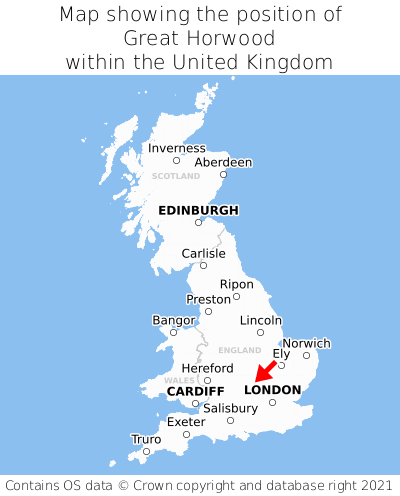Category: Cairns
The Cairns Family in Bruce County
John Cairns and Peggy Milloy had 13 children. As these children matured they found a paucity of affordable farmland in York County. Further west, in Bruce County, three treaties were signed between the crown and the indigenous tribes in the area (Chippewa and Saugene Indians) between 1834 and 1854. In 1855 the land was surveyed and in 1856 lots and farm lots were put up for sale.

This available farmland attracted many of the children, and their cousins to make the move to Bruce County.
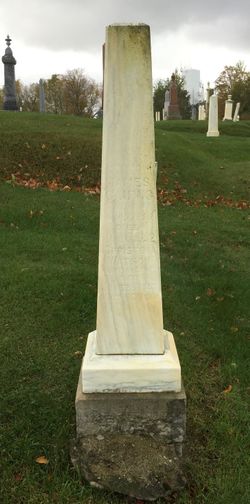
Cairns in Port Elgin Cemetary-Sanctuary Park
https://www.findagrave.com/cemetery/1998289/memorial-search?firstname=&middlename=&lastname=cairns&cemeteryName=Sanctuary+Park+Cemetery&birthyear=&birthyearfilter=&deathyear=&deathyearfilter=&memorialid=&mcid=&linkedToName=&datefilter=&orderby=r&plot=&page=1#sr-64557920
Margaret Malloy
Margaret “Peggy” Malloy
When Margaret “Peggy” Malloy was born 08 FEB 1808 • Kilchenzie, Argyleshire, Scotland, United Kingdom, her father, Neil Milloy (also spelled Molloy), was 44 and her mother, Isabel Watson, was 43. She married John Cairns on 30 January 1827, in Thornhill, York, Ontario, Canada. They were the parents of at least 7 sons and 5 daughters. They farmed in King Township, York, Ontario, Canada and her husband, died in 1879. In the 1881 census, the farm was divided between her sons James and William, with Peggy living in the original house with William.

She moved to Port Elgin in Bruce County a few years later (by July 1885) , along with James and his brother Adam was already farming there in 1880 with his wife Esther Cherry who was from Conc 18 King Twp and whose parents were from Ireland. His brother Neil had moved to Bruce County in 1855.
She died on 22 February 1888, in Bruce, Ontario, Canada, at 81, and was buried in Schomberg, York, Ontario, Canada.
Margaret’s sister Isabella Malloy (1815) married John’s brother Donald Cairns (1804) and purchased John’s first farm on Conc 6 Vaughn Township. In 1878 there were at least six Malloy farms in the area south of Laskey..
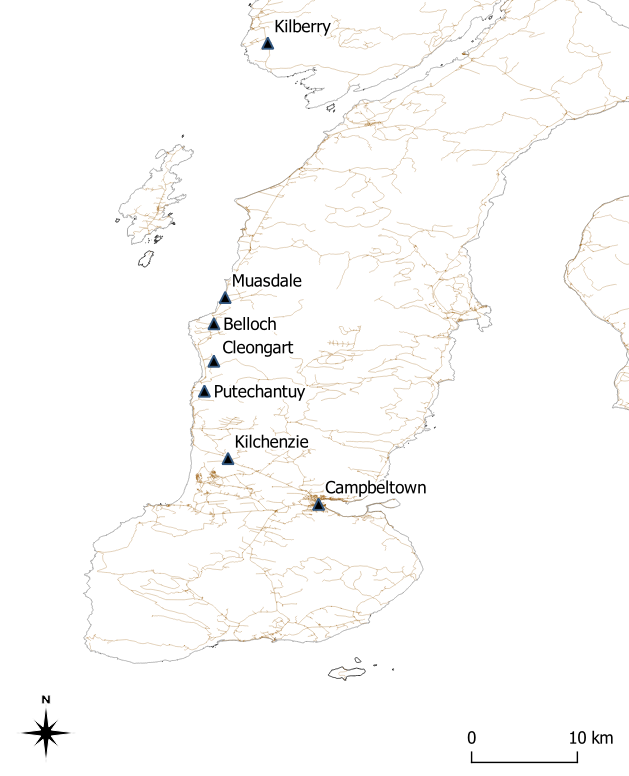
Lorenzo Lafayette Cairns
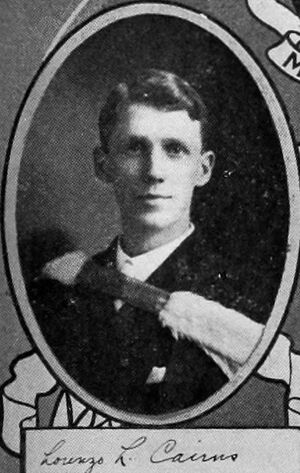
Lorenzo Lafayette Cairns, born in 1884, was the third son of James Cairns and Christina Watson. Like my grandfather, he went to medical school and became a doctor in 1908. He studied in Edinburgh for a year, returned to Canada, and worked as a physician for the Canadian National Railroad in British Columbia. He served overseas as a Captain during the First World War.
Upon his return, he moved to Alberta where he married Rose Heric in 1924 at Bow Island Alberta. He is listed in the 1926 census along with his wife and an infant daughter Mary Glenn.
He died suddenly of a heart attack in 1938. His mother was also living in Calgary at the time. He is buried in Burnsland cemetery with a military headstone. This would mean that he also was injured in the War.
His daughter became a nurse, graduating in 1947. So like my mother, she was an only child whose father was a physician dying at a relatively young age and then went into nursing.
Another interesting aspect of Lorenzo’s life was that he was listed as the father of a daughter in Scotland. However, ship passenger lists show that he returned to Canada more than 9 months before the birth of the child and there is no record of the marriage that is cited on the birth register. It will remain one of life’s little mysteries.
Thomas Train IV 1787-1841
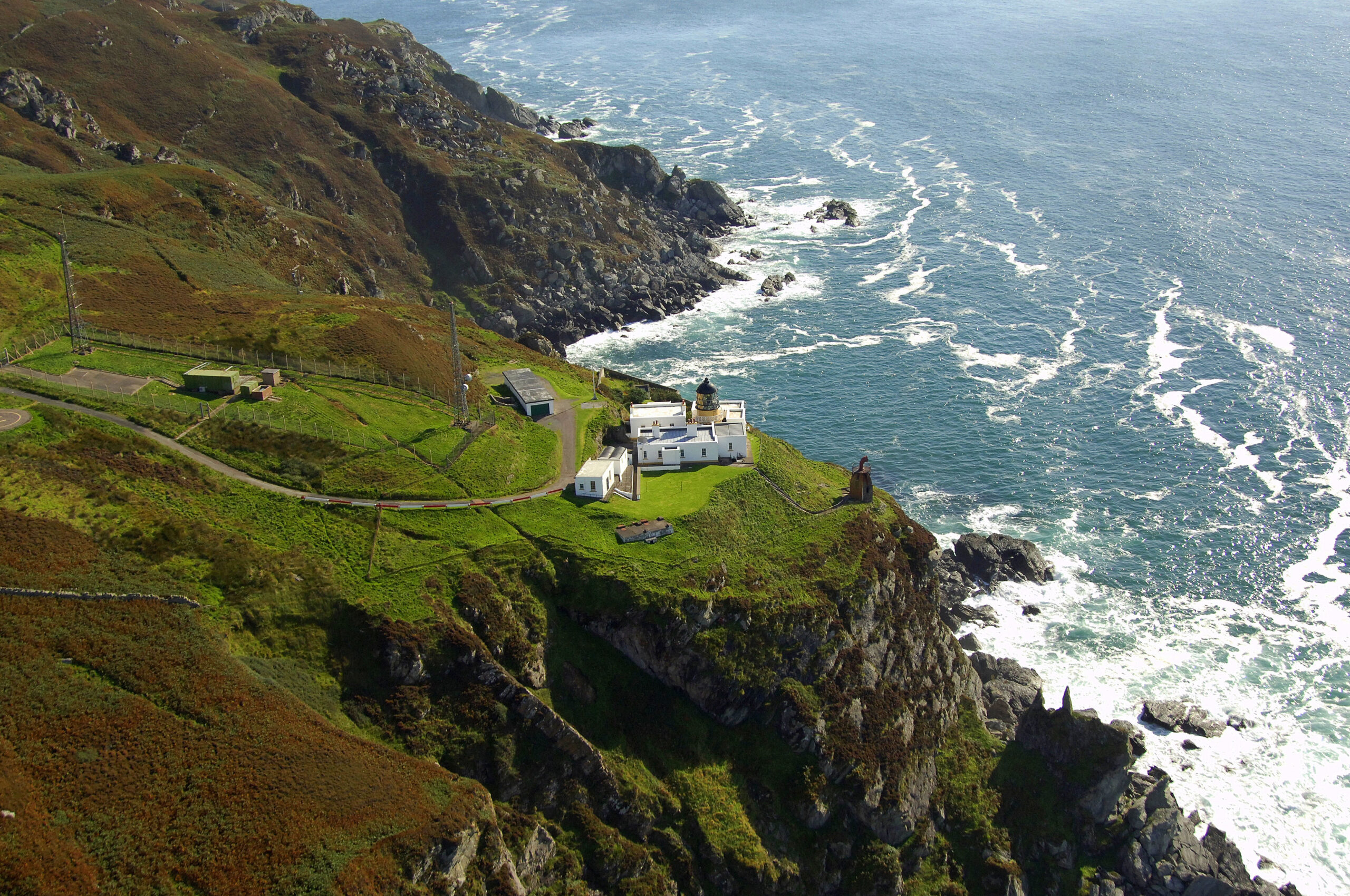
Thomas Train was born in 1787 in Kintyre. He married Janet Campbell in Campbeltown on April 8th, 1816. Janet was the stepdaughter of Thomas Cairns. They had 13 children over a span of 20 years. Thomas obtained his certificate to be qualified as an assistant lightkeeper in 1823 and the family moved to the lighthouse at the Mull of Kintyre, a very remote location without a road and inaccessible by sea. There is now a one-track road to the lighthouse with many hairpin turns.
The lighthouse was perched on the land 240 feet above the sea. They lived on the lighthouse grounds until his death in 1841.
He was buried in Southend Argyll along with his children who had predeceased him. His youngest child was only 4 at the time. We learn from letters that Thomas Train had contemplated moving to York in 1833. His father-in-law Thomas Cairns. His stepfather states that he didn’t want to encourage or discourage him from making the move but cautioned him that it took about 2 and a half years to establish a farm
with crops so he would need sufficient funds to cover that time. He also noted that the Canada Company had made a fortune selling the lands they got from the government and that land prices were rising quickly. He lets Thomas Train know that it isn’t a very religious environment and that he had to consider that he was established in Scotland already.
We learn from other letters that perhaps Thomas was unhappy with the head lighthouse keeper, Mr. Harvey who had taken part of his garden space. The assistant keeper’s cottage fell into disrepair over the years but has been recently restored.
It also appears that Thomas Train’s son, also named Thomas, was good friends with William Cairns, the son of his father-in-law, both being born in 1818.
Campbellton, Kintyre Peninsula

Thomas and Ann Cairns, and their children left Campbeltown, Scotland, in 1831 to purchase farmland in York County, Ontario. This was a time of the Highland Clearances. Many farmers and even shepherds were losing their land leases to more powerful people. and the only way to survive was to emigrate.
Campbeltown is the principal centre of the Peninsula of Kintyre, which is 40 miles (65 km) long and protrudes into the Atlantic.
Campbeltown, known initially as Dalruadhain, was the seat of the kings of Dalriada. St. Ciaran (Kieran), one of the Twelve Apostles of Ireland, landed there in the 6th century, after which the site was renamed Kilkerran, afterward Kinlochkerran. Later, James, the Fifth transferred the territory from the MacDonalds to the Campbells of Argyll, who gave it their family name. No memorial of its antiquity has survived, but a finely sculptured granite Celtic cross (c. 1500) stands in the marketplace, and there are ruins of an old chapel.
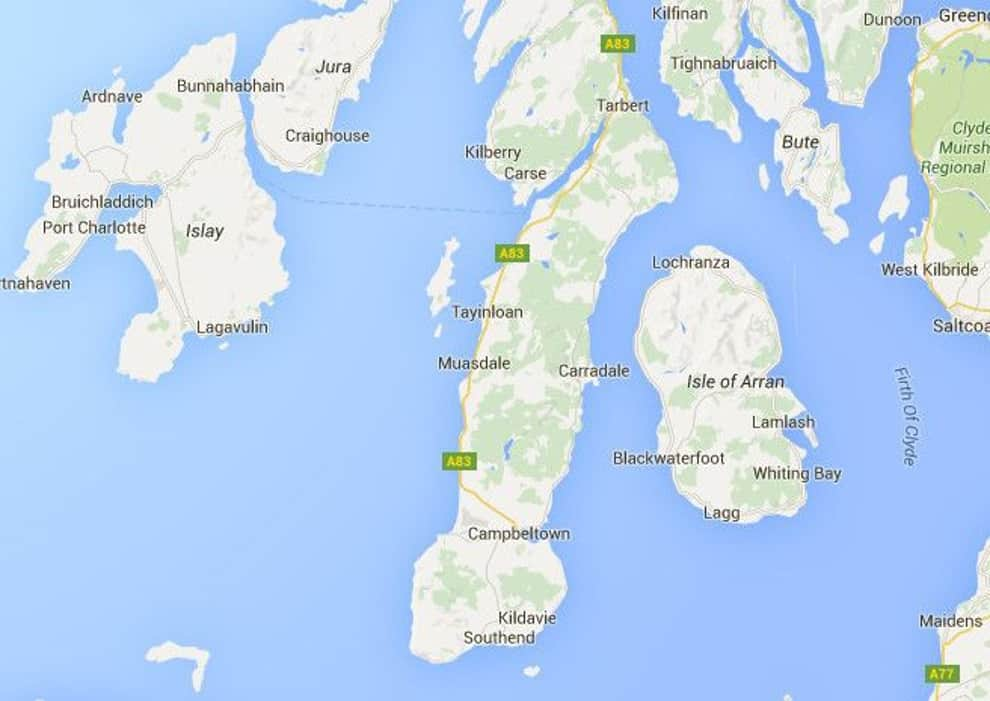
Thomas Cairns Sr.
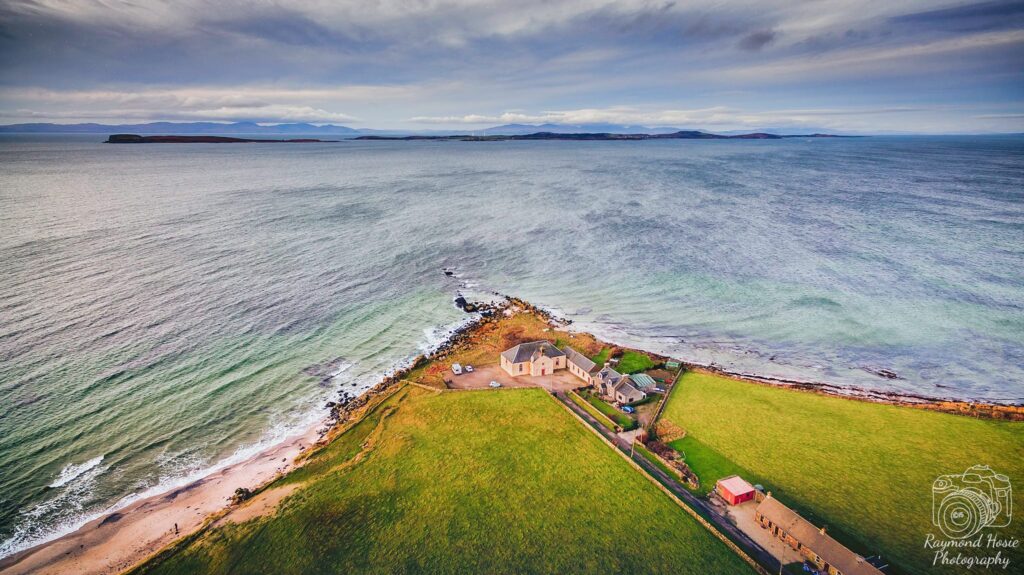
A church record documents Thomas Cairns from Campbelton building the A’Chleil church in 1789. It replaced the condemned Killean church that was two miles north. From about 1672 until 1696, John Cunison was a Covenanting minister.
Thomas was the source of the Cairns family in King Township Ontario. We do not know where he was born, nor do we know the name of his wife. He and his wife had four children: Thomas Jr(1775), Margaret (1778), William (1780), and Agnes(1783) all born in Campbelton.
Except for Margaret the three other children, their families, and their mother emigrated to York County Ontario around 1830-31 to work, purchase farmland and start a new life. Thomas jr married Anne McIntyre (who was previously married to Robert Campbell and had a daughter Janet Cambell) and worked as a shepherd on Kintyre. Thomas, Anne, his mother and sister Agnes lived with or near his son William in Vaugn Township, Ontario. We do no have a recorded of where their burial sites are.
Janet Campbell
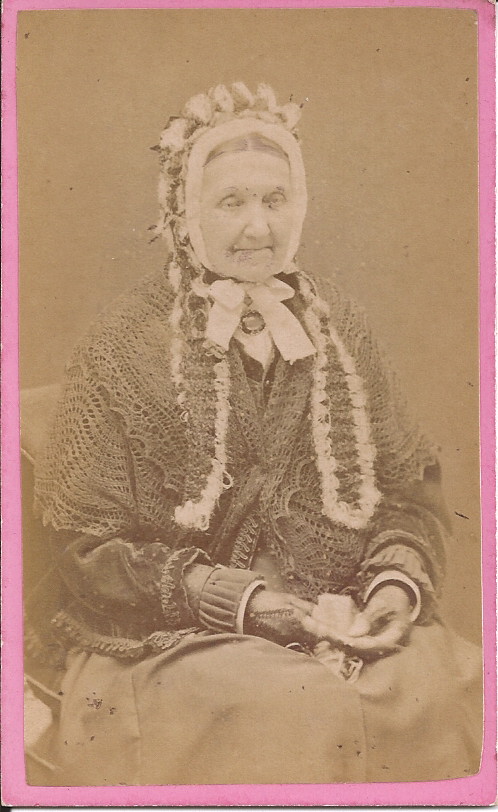
Janet Campbell was born in Tyndrum, Clifton Perthshire, Scotland, around 1795 to Robert Campbell and Anne McIntyre. Her father died when she was 2 years old. Her mother subsequently remarried Thomas Cairns, and the family lived in Argyll. She had six half-siblings. John Cairns was the eldest of them and was our great great grandfather. Janet was the only member of the family that stayed in Scotland. We have correspondence with her and her stepfather Thomas and half-brother, William. Janet married Thomas Train on April 8, 1816, in Campbeltown Argyll. Thomas was the lightkeeper at the Mull of Kintyre. They had 12 children. Her husband died in 1841 at the age of 54. The family moved to Glasgow, where her son, Thomas, became a merchant.
We only learned these facts thanks to letters saved by descendants of the Train family. The correspondence includes letters to her stepfather Thomas and her half-brother, William Cairns. Janet had to work in the shops while living in Glasgow. The family had contemplated moving to Canada, but Thomas Cairns wrote that while they had their problems in Scotland, Canada also posed challenges. Janet Cameron’s life took quite a turn for the better later in life. Her son Thomas became a whiskey merchant and founder of Train and McIntyre Whiskey. This company still exists today. Janet died in Glasgow in 1887, and the family headstone was located in Kintyre.
The Move From Scotland

Scottish Migration to Canada
The marked increase in Scottish immigration to Ontario in the 1800s occurred due to families looking for economic opportunity and others seeking an escape from poverty
Between 1770 and 1815, around 15,000 Highland Scots moved to Canada. They settled mainly on Prince Edward Island, Nova Scotia and Upper Canada. Most came from the western Highlands and Islands and were predominantly Gaelic speaking and agrarian. Many were Roman Catholic. They were forced to leave Scotland by the Highland Clearances.
Around 170,000 Scots crossed the Atlantic to Canada between 1815 and 1870. The immigrants represented a cross-section of the Scottish population. Most were farmers and artisans, but large numbers of business people and professionals were also included. Most of these newcomers were Presbyterian and spoke Scots/ English. They formed many churches and schools during this period. Around 80,000 Scots entered Canada between 1871 and 1901, 240,000 in the first years of the 20th Century, 200,000 between 1919 and 1930, and 147,000 between 1946 and 1960. Of course, many Canadians have also made their way to, and settled in Scotland over the years.
Christina Watsons Family
Christina’s mother, Jane Mitchell, was born in Polmont, Stirlingshire, Scotland, in 1824. Her father, James Mitchell and mother, Grizell Grace Calder, married and had eight living children when they emigrated from Polmont, Scotland, in 1837.
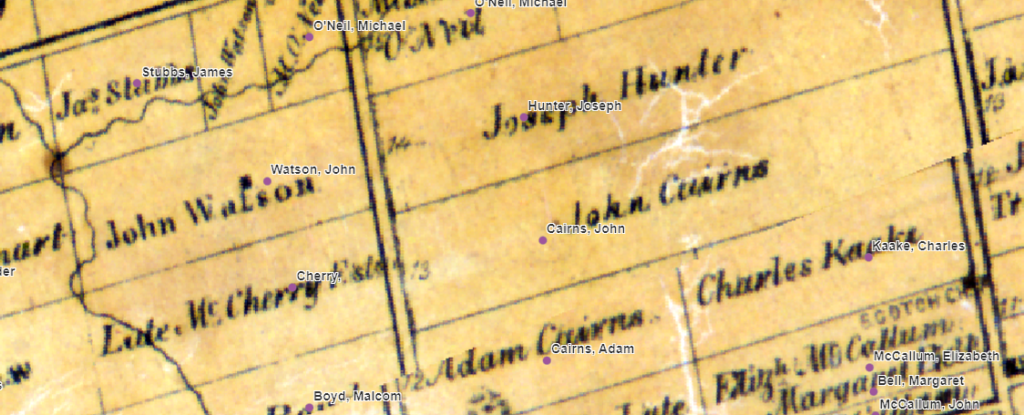
An Alexander Mitchell owned land on the West Side of Concession 9 Lot 18 of King Township. Alexander took possession of this lot in 1856, a year after James Mitchell died. The Cairns farm was on the east side of Lot 13 Concession 10, just south down the road. The Watson farm was just to the west on the east side of Lot 14 Concession 11. Jane Mitchell married John Watson in 1846 when he was 24. Their daughter Christina Watson was born in 1859 and married James Cairns in 1879 at the age of twenty. James was the son of John Cairns and the grandson of Thomas Cairns who was a shepherd in Kintyre and left for Canada in 1831 with his family.
The Cairns Children
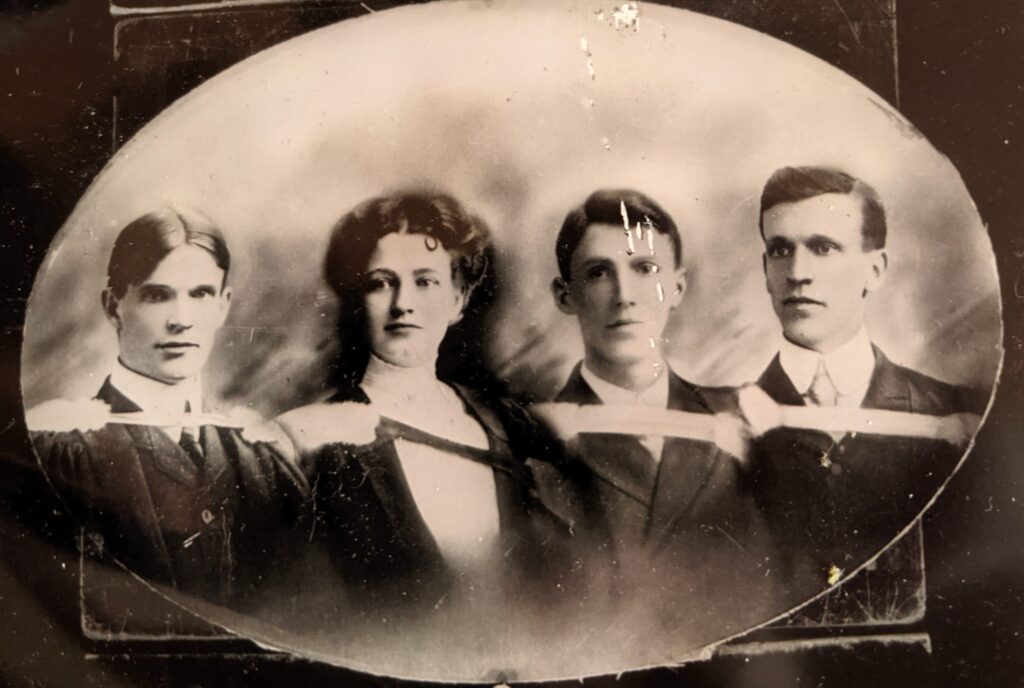
The Cairns family took a new direction in the generation of the Cairns and Watson children. Instead of farming like their parents and grandparents and great-grandparents, the four eldest children all went to university. John William became a pharmacist in BC. Kelso Carmichael our grandfather was a physician in Saskatchewan as was his younger brother Lorenzo Lafayette in Alberta. Jean Cairns became the fifth woman lawyer in Canada practicing in Ontario. Sadly three younger siblings died in childhood. Image to the right in order- Kelso, Jean, John William, Lorenzo Lafayette.
A Great Role Model
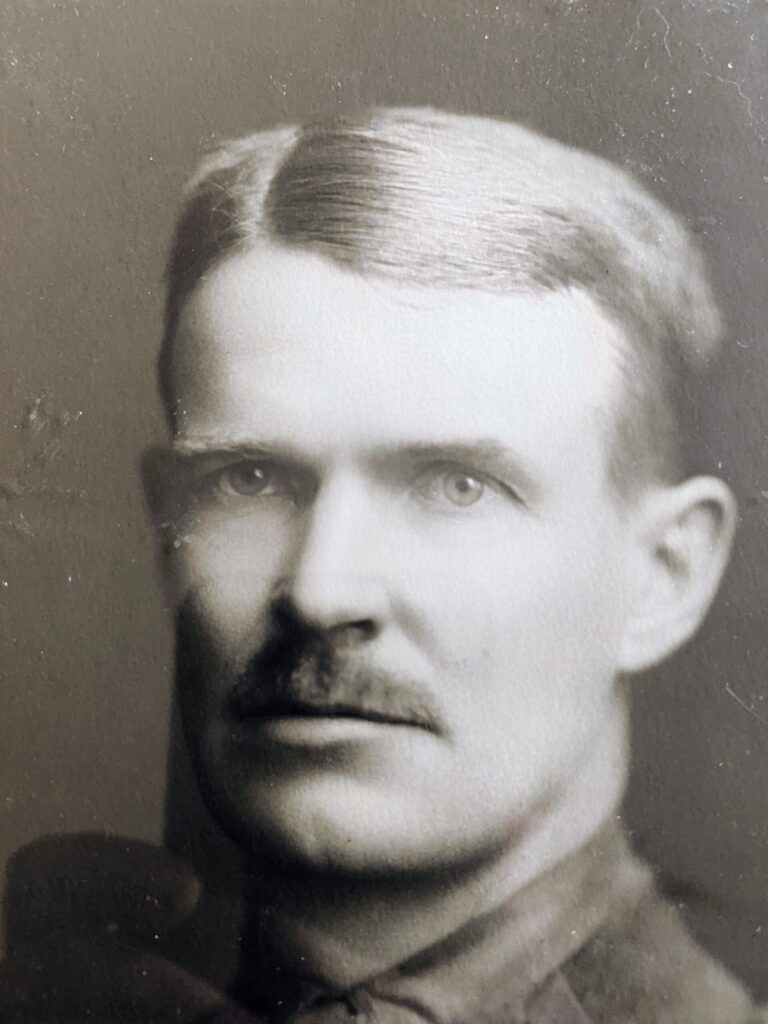
Kelso Carmichael Cairns was born in 1882 near King City, Ontario. During his childhood, he also lived in Port Elgin and Huntsville. According to our mother, her father was admitted to medical school but first played bridge on the ships on the great lakes to earn money for medical school. He graduated in 1905 and was known as a good athlete and a lacrosse champion. In 1908 he married Edith May Heath, a woman he met in Huntsville. They moved to Lumsden, Saskatchewan, where his aunt Flora Wilkie lived and then to Swift Current. Their first child Donald was born in 1910 but died in 1912 as a toddler. His second child Jean Cairns was born in 1917.
He enlisted in the army in 1916 during the First World War and was attached to the 209th Overseas Battalion as the head physician with the rank of captain. While overseas, he contracted influenza and returned to Canada for convalescence. For 2 years, he remained in Quebec for medical treatment until he was discharged from the army. The family returned to Swift Current. Given the serious nature of his illness, it is a strong possibility that Kelso had an early case of the Spanish flu before it was declared a pandemic. He died of pneumonia in 1934 at age 51. His widow was awarded the Memorial (Silver) Cross as he died of injuries related to his time at war.He was known as a prominent physician and a constant student of his profession, as well as an active member in organizations for the benefit of the community. Our mother was just 17 when he died, and she cherished his memory for her whole life.
Huntsville


James Cairns moved to Huntsville in 1900 to work at the Tannery. He had sold the original family farm in King Township to his brother and moved in with his wife Christina and their four children. Kelso met his future wife in Huntsville, Edith Mae Heath.
Albert Heath moved to Huntsville in 1876 to claim land and start a lumber company. Heath, Tait and Turnbull company was built beside the railway at the foot of Yonge Street in 1886. The company is located on land owned by George Elliott. In 1892 the company’s name was changed to the Huntsville Lumber Company. Mr. Heath’s name was gone by 1899.
Rise and Fall of the Heaths
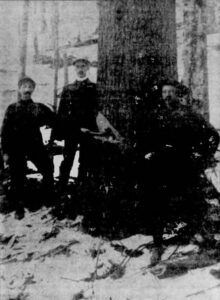
Albert Heath was born in Crigglestone, Yorkshire, in 1848. The 1851 census finds him living with his grandparents. In 1856 at the age of 8, he emigrated with his mother, Anne Heath, to the United States, landing on Ellis Island.
He started his family in Pennsylvania with his wife, Caroline Stevenson. They moved to Muskoka and eventually lived in Huntsville, where according to my mother, he became a lumber baron. They had 6 children, the second youngest being my grandmother Edith May Heath. The family was quite well off, and Edith’s parents were reluctant to give permission for her to marry my grandfather Kelso Carmichael Cairns.
According to family lore, he lost everything in a fire and then migrated out west. He was listed in a 1900 Washington census as a shingle and mill proprietor. He appears to be living in Vancouver with his adult son Harry in 1911. Eventually, he moved again to Tacoma Washington. His death certificate in 1912 lists suicide as the cause of death.
Edith May Heath
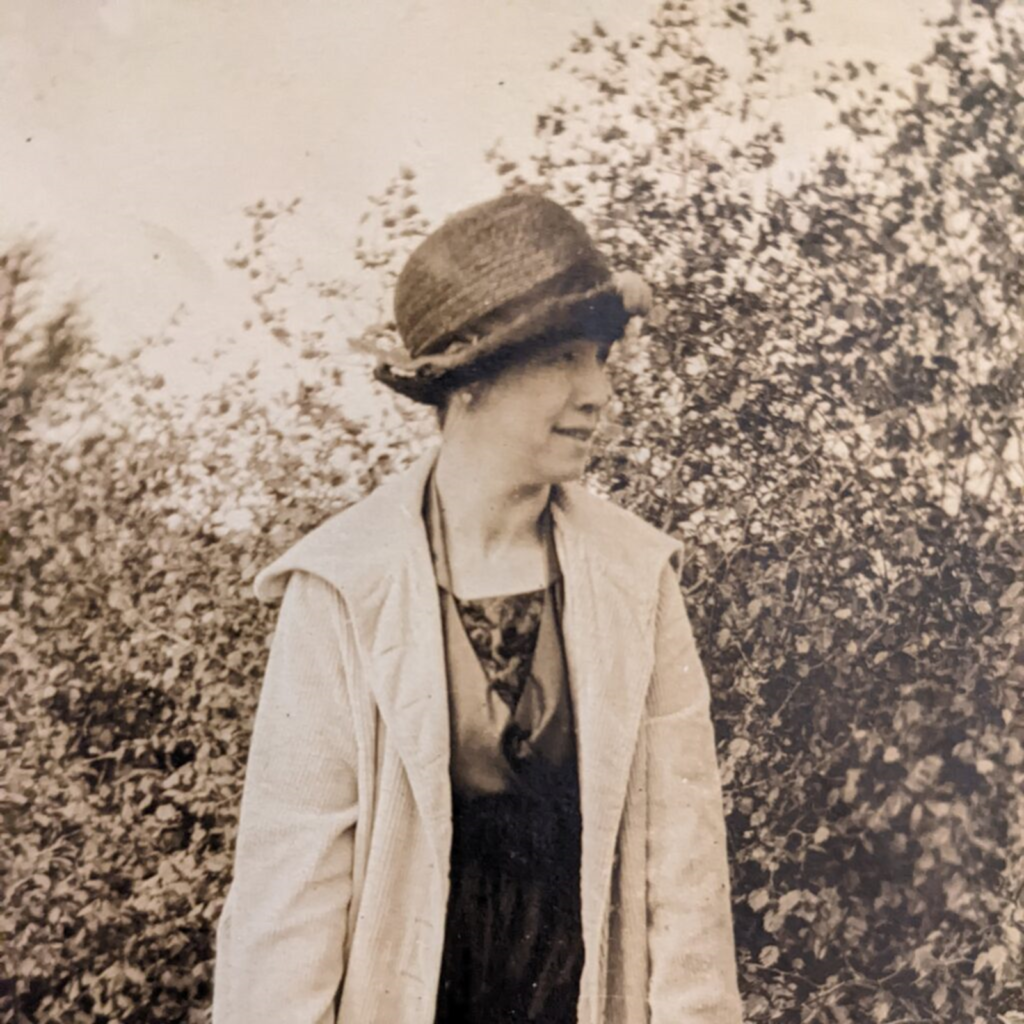
Albert and Carrie Heath moved to the Huntsville area in 1876 to start a lumber mill. Albert was born in Yorkshire England in 1948 and immigrated to Galt Ontario with his widowed mother Ann in 1856. He married Carrie Stevenson in 1874 in Pittsburg, Penn. Edith May Heath was born in Sparrow Lake (Gravenhurst), Ontario on February 28th, 1883, the fifth of six children. Albert partnered with Andrew Tait of Orillia Ontario, becoming a wealthy lumber baron. The Heaths moved to xxxx Centre Street in 18–
The 1901 census lists Edith as being 18 and working as a bookkeeper. In 1908 she was living in Toronto and married Kelso Cairns and then moved to Lumsden, Saskatchewan.

We have created this site to share random stories that come up in exploring our family history. Stories glimpse our family beyond the formal relationships we unearth in our search for ancestors. We organize these stories primarily through family names and geography, but there are no restrictions! We hope they provide some insights and entertainment.
